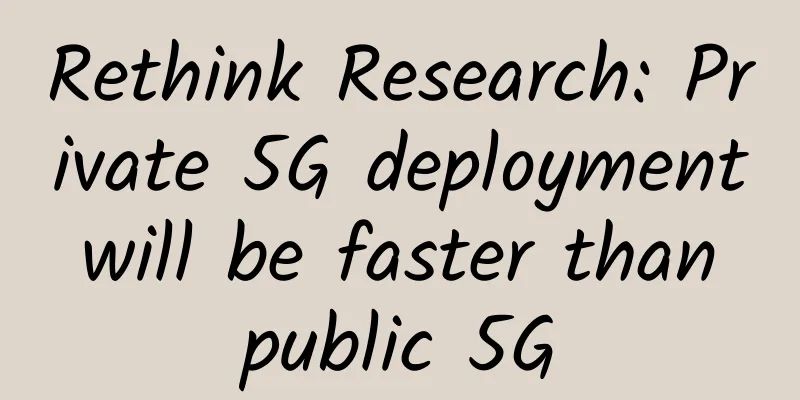Networking in Pictures: What is Virtual Router Redundancy Protocol (VRRP)?

|
VRRP is a commonly used fault-tolerant protocol that can improve network reliability. Today, Rui Ge will introduce the VRRP protocol to you in detail. Let’s get straight to the point! What is VRRP?
VRRP Terminology
How VRRP worksVRRP uses virtual routers to control which physical routers are assigned to the access network. A VRRP group consists of a master router and one or more backup routers that share a virtual IP address. If the master router fails, VRRP automatically assigns one of the backup routers without affecting network traffic. When the failed router is operational again, it becomes the master router again. VRRP provides this redundancy without requiring user intervention or additional configuration of any device on the network. The VRRP master router sends VRRP advertisement messages to the backup routers. When the VRRP master router fails to send the advertisement message, the backup router with the highest priority takes over as the master router. VRRP normal working scenario As shown in the figure below, there are two virtual devices, the upper one is the main router, and the lower one is the backup router. Under normal circumstances, traffic flows through the main router: VRRP normal working traffic flow When the main router fails and shuts down: VRRP master/slave switch working scenario At this time, the original backup router quickly becomes the main router, and the traffic is also switched to the backup router. This is the power of VRRP! VRRP three statesVRRP has the following three states: Initialize Initial state
Master Activity Status
Backup Status
VRRP election mechanism As shown in the picture, no matter how difficult the technology is, it will be very clear as long as you draw it! The main thing is to pay attention to selecting the main router based on priority: the router with higher priority is selected as the main router. If two routers have the same priority, the interface IP addresses are compared and the router with the larger interface IP address is selected as the primary router. Other routers act as backup routers and monitor the status of the Master router at any time. If the backup router in the group does not receive a message from the Master router within the Master_Down_Interval time, it will switch to the master router. In a VRRP group with multiple backup routers, multiple Master routers may be generated in a short period of time. The priority in the received VRRP message is then compared with the local priority, and the router with the highest priority is selected as the Master router. CaseVirtual Router Network Environment Example - Master Router ElectionAs shown in the figure, routers R1, R2, and R3 form a virtual router VRRP. The virtual IP address of VRRP is 192.168.1.1. Since the priority of R1 is 100, which is higher than 80 of R2 and 60 of R3, R1 is the Master router, with an IP address of 192.168.1.11. R2 and R3 are backup routers, with IP addresses of 192.168.1.12 and 192.168.1.13 respectively. The default gateway of hosts PC1, PC2, and PC3 in the LAN is set to the VRRP virtual IP address 192.168.1.1. Under normal circumstances, R1 acts as the main router and is responsible for forwarding messages in the LAN to the external network. When router A is shut down or fails, router B or router C (based on priority) will become the main router as the backup router and forward messages from the LAN to the external network, thereby maintaining communication between the LAN and the external network and improving network reliability. Now there are several situations: R1 fails, R2 and R3 have different prioritiesR1 fails, R2 and R3 have different priorities As shown in the figure, due to the failure of R1, its link has been grayed out. At this time, since the priority of R2 is 80, which is higher than R3's 60, R2 is the primary router and R3 is still the backup router. R1 fails, R2 and R3 have the same priorityR1 fails, R2 and R3 have the same priority As shown in the figure, the priority of R2 and R3 is 80. At this time, the size of the IP address is compared. Since R3's IP address 192.168.1.13 is higher than R2's IP address 192.168.1.12, R3 is the primary router and R2 is the backup router. Notice: VRRP rejects packets in any of the following situations:
Other points about VRRPVRRP Preemption VRRP preemption is enabled by default, which enables a higher priority virtual router backup to take over from the virtual router backup that was elected as the virtual router master. If preemption is disabled, the virtual router backup that was elected as the virtual router master remains the master until the original virtual router master recovers and becomes the master again. VRRP Versions VRRP has two versions: version 2 and version 3. Version 2 is widely used.
VRRP packet capture - version information VRRP AuthenticationVRRP provides many authentication methods to protect the infrastructure running VRRP from malicious attacks. Generally, there are two types of authentication methods: VRRP Authentication Authentication is not enabled by default. VRRP authentication packet capture As shown in the packet capture, authentication is not enabled. Advantages of VRRPVRRP provides failover/redundancy at the network gateway. There is no single point of failure because the standby device is configured to take over if the primary device fails. Failover occurs quickly (usually within seconds). VRRP is used in an active-passive (primary-backup) configuration and can also be configured in an active-active configuration with load balancing. VRRP is an IETF open standard protocol, therefore, multiple vendors/types of devices can be part of a VRRP group. The master gateway device can have multiple backup devices. SummarizeVRRP is an open standard IEEE protocol that enables a group of routers to form a single virtual router. Using VRRP, several routers are grouped together to appear as a single default gateway for the network, providing redundancy in the network and eliminating the single point of failure inherent in a static default routing environment. VRRP is a network layer protocol with protocol number 112. The number of routers in the group acts as a virtual logical router, acting as the default gateway for all local hosts. If any router fails, other group members can assume the responsibility of forwarding traffic. This article mainly introduces:
|
>>: A sensible network engineer should have learned to handle this kind of failure long ago.
Recommend
How to choose between open source self-built/hosted and commercial self-developed trace?
[[419923]] With the rise of microservice architec...
Megalayer: Limited-time flash sale for Hong Kong servers starting at 199 yuan/month, Hong Kong 15~40M optimized bandwidth servers starting at 399 yuan/month, home broadband VPS starting at 50% off
Megalayer launched the "April Carnival, Cont...
Automation in SD-WAN and why you need WAN acceleration
Robert Sturt, general manager of streaming servic...
Tragicservers: $7/year OpenVZ-128MB/10GB/500GB/Los Angeles
It has been more than a year since I shared the n...
5G: What it means and why we'll never need 6G
The launch of 5G isn’t all that far away, with ro...
China's server virtualization market: Huawei ranks second in the market and ranks first in growth rate
Nowadays, in such a competitive market as server ...
Http code: What does 304 mean? How much do you know?
picture 1. http code 304 Not Modified The HTTP st...
Deep dive into the Kubernetes network model and network communication
Kubernetes defines a simple and consistent networ...
In 2025, the 5G core market size will reach US$9.497 billion
According to ResearchAndMarkets, the global 5G co...
Huawei's high-definition intelligent video surveillance solution helps efficient highway operations
Introduction: At present, security technology is ...
Cloud dedicated line and customer access technology networking solutions
Labs Guide As cloud-network integration becomes i...
Is Matter worth the wait?
An ambitious new smart home networking standard i...
War in the SDN World: SR and Openflow
In the past two years, SDN technology has continu...
The original intention of building Huawei Software Development Cloud: to deliver excellent development methods and capabilities to software companies and developers
[51CTO.com original article] With the rapid devel...
Huawei's "Knowledge Conference 2020" is about to kick off, let's join the carnival party for "knowledgeable people"!
Where the will goes, there is a way; not even the...









